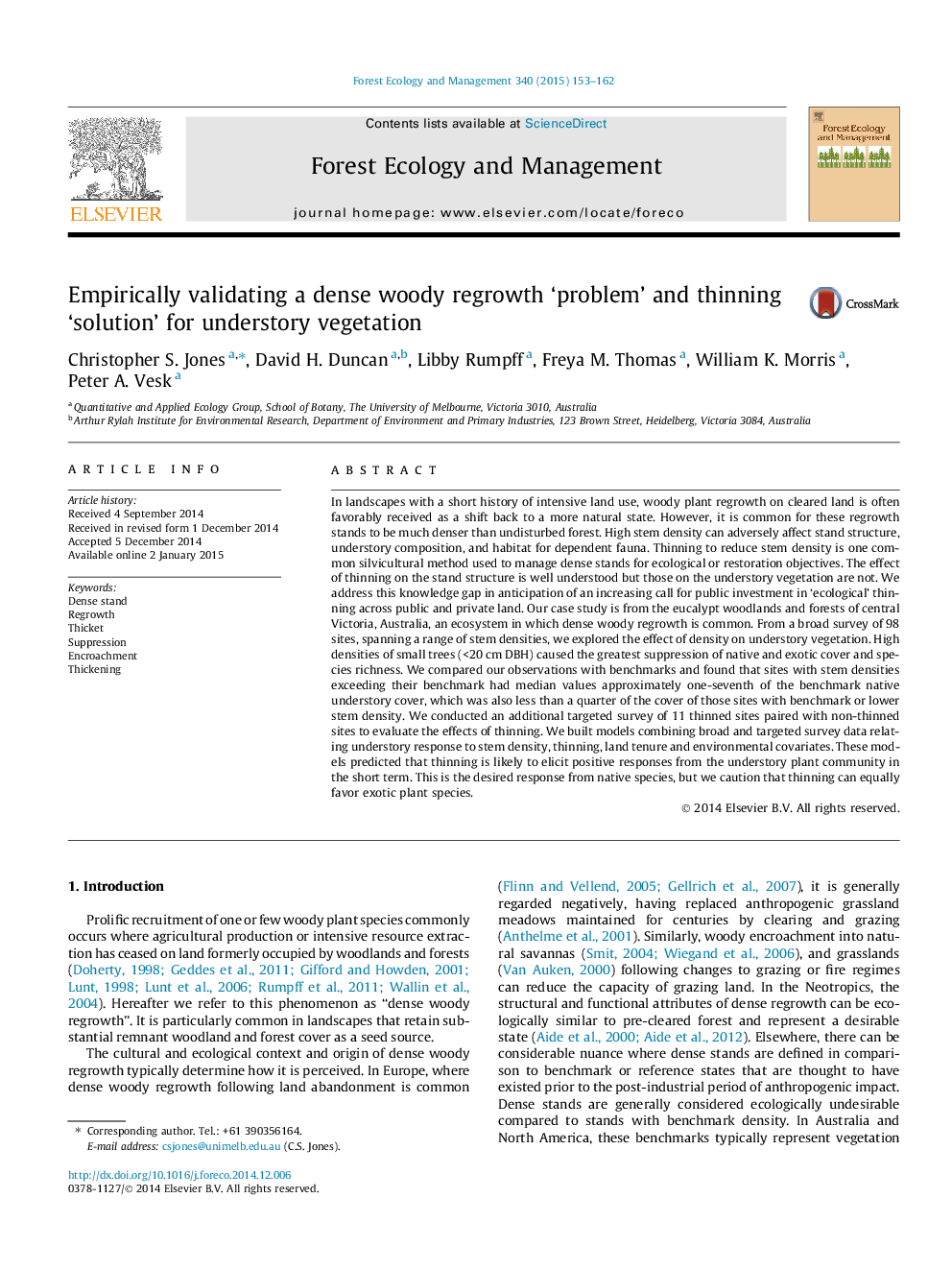| کد مقاله | کد نشریه | سال انتشار | مقاله انگلیسی | نسخه تمام متن |
|---|---|---|---|---|
| 86350 | 159180 | 2015 | 10 صفحه PDF | دانلود رایگان |
• Dense woody regrowth suppressed native and exotic understory vegetation.
• Published condition benchmarks can be used to inform dense stand management.
• Thinning can restore native understory vegetation.
• Thinning can increase exotic understory vegetation.
• Thinning responses are influenced by propagule availability and growth conditions.
In landscapes with a short history of intensive land use, woody plant regrowth on cleared land is often favorably received as a shift back to a more natural state. However, it is common for these regrowth stands to be much denser than undisturbed forest. High stem density can adversely affect stand structure, understory composition, and habitat for dependent fauna. Thinning to reduce stem density is one common silvicultural method used to manage dense stands for ecological or restoration objectives. The effect of thinning on the stand structure is well understood but those on the understory vegetation are not. We address this knowledge gap in anticipation of an increasing call for public investment in ‘ecological’ thinning across public and private land. Our case study is from the eucalypt woodlands and forests of central Victoria, Australia, an ecosystem in which dense woody regrowth is common. From a broad survey of 98 sites, spanning a range of stem densities, we explored the effect of density on understory vegetation. High densities of small trees (<20 cm DBH) caused the greatest suppression of native and exotic cover and species richness. We compared our observations with benchmarks and found that sites with stem densities exceeding their benchmark had median values approximately one-seventh of the benchmark native understory cover, which was also less than a quarter of the cover of those sites with benchmark or lower stem density. We conducted an additional targeted survey of 11 thinned sites paired with non-thinned sites to evaluate the effects of thinning. We built models combining broad and targeted survey data relating understory response to stem density, thinning, land tenure and environmental covariates. These models predicted that thinning is likely to elicit positive responses from the understory plant community in the short term. This is the desired response from native species, but we caution that thinning can equally favor exotic plant species.
Journal: Forest Ecology and Management - Volume 340, 15 March 2015, Pages 153–162
